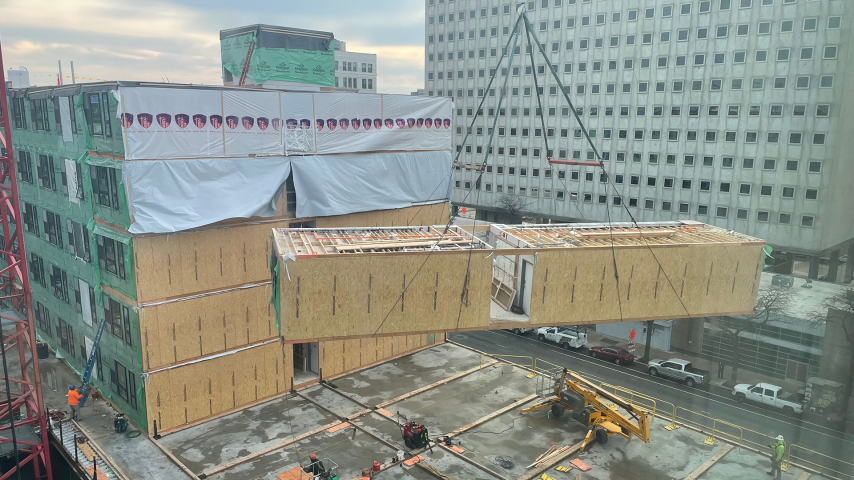
Modular construction consists of building components prefabricated offsite in a manufacturing facility. These components are then transported and assembled onsite. Since both offsite and onsite work simultaneously occur, opportunities exist to shorten construction schedules and speed income generation, particularly for projects with repetitive building units, such as apartments and hotels. Modular construction may also reduce job costs while improving building performance.
But there are challenges to widespread adoption of modular construction. These include a lack of industry standards and restrictive financing. As a result of these and other factors, modular construction remains less than 6% of the commercial construction market in the U.S. and Canada.
To better understand the opportunities and challenges, a USDOE study was commissioned from 2020- 2023, to compare the operational and market performance of 48 modular multifamily projects to 158 site-built projects in several major U.S. housing markets.
Time and Cost Savings and Building Performance
For the modular projects studied, the offsite portion of work comprised roughly 40-60% of the total project. Modular contracts were often ‘locked in’ three to six months ahead of production with few, if any, change orders to the modular scope. Modular projects were completed 30% faster on average than site-built projects, which for larger projects, provided 6-12 months of added revenue.
Due to shorter construction schedules, modular projects also had lower jobsite overhead. The manufacturer’s direct relationship with the developer on most projects reduced contractor markups. Together, these and other factors contributed to an overall 5% cost savings for modular construction when compared to site-built construction.
Additionally, while few differences were observed between the types of materials used in either site-built or modular construction, the installation quality of modular building envelopes observed in the USDOE study appeared to be better than that of site-built enclosures on most projects.
Air leakage rates for modular buildings (0.22cfm/sf) were similar to site-built buildings as was average post-occupancy energy use (36.0kBtu/sf/yr). However, since two-thirds of the modular projects studied were affordable housing, dwelling units were smaller (560sf) on average compared to site-built units (830sf). When normalized for 30-50% higher occupant density, modular buildings had better energy efficiency. Supporting this conclusion, ENERGY STAR™ benchmarking scores for modular multifamily buildings (86) were overall better than site-built (81).1
While the unavoidable doubling of framing between modules results in added materials, it may also result in buildings more resistant to hazards such as fire, windstorms and seismic loads. This is particularly important given that most modular construction serves vulnerable populations living in affordable housing. Buildings that are more likely to withstand natural disasters are also more likely to have a longer service life, require less O&M and have a smaller carbon footprint.
View the technical report and study.
Guest writer Kevin Grosskopf is a professor with the University of Nebraska–Lincoln Durham School of Architectural Engineering and Construction.




